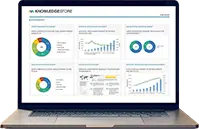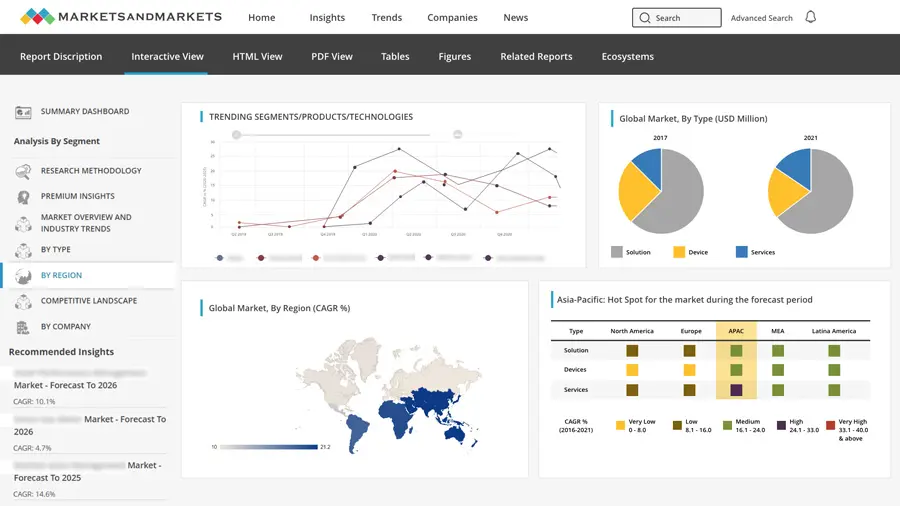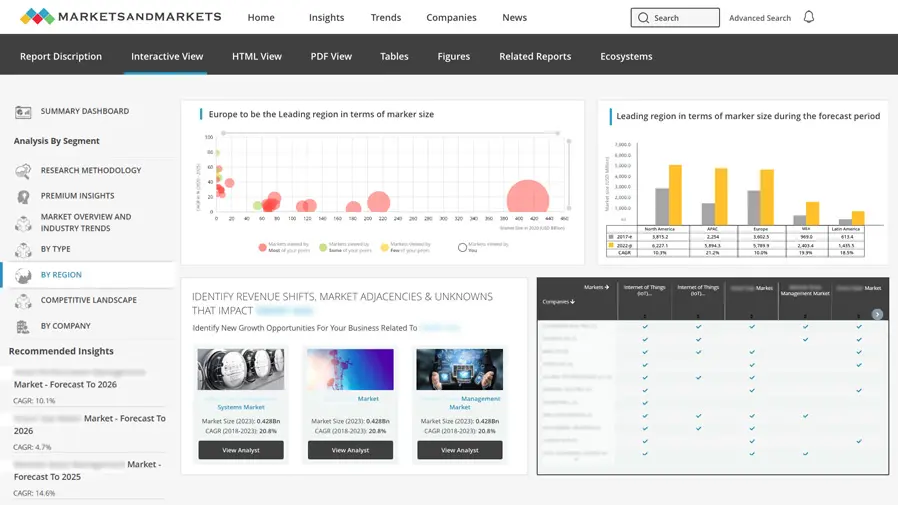Drug Discovery Technologies Market - Global Forecast to 2029
The global drug discovery technologies market accounted for USD XX billion in 2023. It is projected to reach USD XX billion by 2029 from USD XX billion in 2024, at a CAGR of XX% during the forecast period. The major factors driving the growth of this market are technological advancements in drug discovery , rising investment in research and development of novel therapeutics, and robust pipeline of the therapeutics in clinical development. However, high capital investment and high cost of instruments is anticipated to hinder the market growth over the forecast period.
Attractive Opportunities in Drug discovery technologies Market

GLOBAL DRUG DISCOVERY TECHNOLOGIES MARKET DYNAMICS
Driver: The growing R&D funding and increasing public and private investments to aid market growth
There have been numerous grants and investments to support academic institutions and research organizations conducting therapeutic drug development research. These grants support drug discovery initiatives. Some instances include- in February 2024, the National Center for Advancing Translational Sciences (NCATS) awarded USD 7.8 million to the University of Pittsburgh School of Medicine (US) for developing a drug discovery system called the Pitt Translational Center for Micro-physiology Systems.
Furhtemore, in January 2025, NVIDIA, a glober leader in AI partnered with healthcare solution provider companies which include IQVIA, Illumina, Mayo Clinic and ARC Institute to transform USD 10 trillion life science and healthcare industry by accelerating drug discovery, increasing genomic research and developing advanced healthcare services with generative AI.
Restraint: High costs associated with instruments and high capital investment.
High initial capital investment is one of the significant restraints for the drug discovery technologies market, limiting its adoption, especially in smaller labs, academic institutions, and emerging markets. The purchase price of advanced sequencing instruments ranges from hundreds of thousands to millions of dollars, which makes it a heavy financial burden. For example, developing an NGS facility requires investments in data storage, high-performance computing instruments, and toold used in lab automation. Cost would arise in continuous personnel training, equipment maintenance, and the constant procurement of consumables.
Furthermore, HTS instruments include a wide range of equipment, such as automated liquid handling systems, robotic arms, microplate readers, high-resolution imaging systems, and associated software. The associated costs of these instruments are high. The high initial investment however, can limit access to high-throughput screening technologies reduce the rate of their adoption. Some of the instruments, such as flow cytometers and liquid handlers, are expensive. The price of a flow cytometer varies from USD 80,000 to USD 150,000 for sophisticated systems with high throughput. Moreover, liquid handling workstations are also premiumly priced. For instance, the price range falls between USD 100,000 to USD 500,000, depending on its sophistication. This is mainly due to the capital investment required and technological advancements and automation offered in the instruments.
Thus, the high upfront and operational costs, many potential users look to outsourced drug discovery services for practicality instead of investing in-house. This financial barrier slows the adoption of drug discovery services in less-funded research projects, small-scale clinical diagnostics, and resource-constrained regions, which restricts the overall market growth.
Opportunity: Increasing adoption of advanced technologies for drug discovery in emerging markets
The emerging markets include developing economies across the globe. For instance, economies like China and India have observed significant growth in the pharmaceutical and biotechnology industries. There is a substantial commercial opportunity in the drug discovery technologies such as NGS market presented by the use of long-read sequencing technologies, because they solve important issues in short-read techniques. Platforms for long-read sequencing, like those available from Pacific Biosciences and Oxford Nanopore Technologies, allow the run of full-length DNA or RNA reads and thus yield more complete and accurate genome assemblies. It is particularly valuable for the study of complex genomic regions, i.e., structural variations, repetitive sequences, and phased haplotypes, that are difficult to determine by short-read methods. Applications such as de novo genome assembly, full-length transcriptomics and epigenetic-related studies have increased the demand, and long-read technologies have been widely introduced.
Furthermore, Positive government funding, alongside the rise in drug discovery programmes using HTS technologies, are all contributing to a growing set of opportunities for drug discovery technologies market. At the same time, with the continuous research development of high-throughput screening technology and its increasing appliaction in personalized medicine, genomics, and infectious disease research, the technology is being used and supported to extend to these fields effectively. In emerging economies, governments also emphasize education and training programs in high-throughput screening methods to create a trained workforce. The inherent of the emerging markets environment is favorable for the development, implementation and application of such high-throughput screening technologies. For example, the Indian Department of Biotechnology (DBT) of the Indian Government is encouraging the application of HTS technology across a wide range of applications in agriculture and medicine.
Challenge: Standardization Issues
Standardization problems are of high concern in the drug discovery platforms such as NGS and HTS, affecting the reproducibility, robustness, and scalability of workflows. The inconsistency regarding uniform protocols for sample preparation, library construction and data analysis generates technical variability between labs and platforms. This discrepancy may limit the comparison of datasets and also arousing difficulties in multi-center studies, or collaborative work. Whenever the test is applied in clinical settings, the lack of standard test validation protocols and regulatory approval, especially across countries, poses barriers to the commercialization of technologies like NGS-based diagnostics. In addition, heterogeneous bioinformatics tools and data formats add to the difficulty of seamless integration and analysis of data. Addressing these standardization issues ensures high-quality results, and leads to wider application to both research and clinical fields.
In addition, High throughput screening workflow produces massive amounts of data from thousands of biological or chemical experiments. To handle this heterogeneous dataset robust data management strategies have to be implemented to guarantee quality and accessibility. The analysis of HTS data needs sophisticated statistical techniques and bioinformatics tools to extract significant findings. This adds to the complexity of data management. Moreover, the creation of assays that are compatible with HTS requires the refinement of conditions permitting rapid, parallel screening of several compounds. Reliability and reproducibility across high-throughput platforms is desirable yet difficult.
Key Market Players
- Thermo Fisher Scientific Inc. (US),
- Agilent Technologies, Inc.(US),
- Merck KGaA (Germany),
- Danaher Corporation (US),
- Revvity, Inc. (US),
- Bio-RAD Laboratories, Inc. (US),
- Corning Incorporated (US),
- Sartorius AG (Germany),
- Charles River Laboratories International, Inc. (US),
- QIAGEN N.V. (Netherlands),
- WuXi AppTec Co., Ltd. (China),
- Lonza (Switzerland),
- EuroFins Scientific SE (Luxembourg),
- Illumina, Inc. (US), and
- Eppendorf SE (Germany).
Recent Developments:
- In November 2024 Exscientia entered into merger agreement with Recursion, a AI-powered drug discovery and development companies. As a result of this acquisition, Exscientia becoming a wholly owned subsidiary of Recursion creating a vertically-integrated and technology-enabled drug discovery platform.
- In September 2024, Gilead Sciences, Inc. and Genesis Therapeutics, Inc. announced that the companies have entered into a strategic collaboration to discover and develop novel, small molecule therapies across multiple targets. As a result of this collaboration will deploy Genesis field-leading AI platform, GEMS (Genesis Exploration of Molecular Space), to assist in generating and optimizing molecules for targets selected by Gilead.
- In September 2024, Scientist.com, the leading research platform for the pharmaceutical industry, has announced a new partnership with Evotec SE, a leading drug discovery and development company. Through this collaboration, Evotec’s comprehensive suite of R&D services, spanning the entire drug discovery and development process, will now be available to registered users on Scientist.com’s award-winning digital marketplace.
- In August 2024, Revorf Co., Ltd. (Revorf) and Toshiba Digital Solutions Corporation (Toshiba) have entered into a strategic partnership agreement under which they will provide IT-driven drug discovery solutions targeting undruggable proteins in the field of allosteric drug discovery.
- In July 2024, Innovent Biologics, Inc., biopharmaceutical company that develops, manufactures and commercializes high-quality medicines for the treatment of oncology, cardiovascular and metabolic, autoimmune, ophthalmology and other major diseases, enteed into a strategic partnership with WeComput to jointly advance the construction and improvement of Innovent Biologics' Artificial Intelligence for Drug Discovery platform . Through this collaboration, both parties will combine their respective strengths and technologies to further accelerate the drug discovery and development process using AI technology.
- In May 2024, CAS, a division of the American Chemical Society specializing in scientific knowledge management, announced the launch of the CAS BioFinder Discovery Platform, a comprehensive life sciences offering that will reveal novel insights through unprecedented data connections. The new offering provides drug discovery scientists with the ability to explore known and predicted data, find answers to their questions quickly and reliably, and accelerate the pre-clinical drug discovery process.
- In May 2024, Sanofi, Formation Bio and OpenAI are collaborating to build AI-powered software to accelerate drug development and bring new medicines to patients more efficiently. The three teams will bring together data, software and tuned models to develop custom, purpose-built solutions across the drug development lifecycle.
- In December 2023, Revvity, Inc., launched its Signals Research Suite, a unified, cloud-native SaaS platform that drives scientific collaboration across R&D disciplines from drug discovery to specialty chemicals material development. It integrates the Revvity Signals Notebook, VitroVivo and Inventa applications into a single, robust solution that supports the entire drug development process, from early research and in vitro testing and safety to early development as well as specialty chemicals new product development.
- In December 2023, MilliporeSigma, the U.S. and Canada Life Science business of Merck KGaA, , a launched its AIDDISON drug discovery software, the first software-as-a-service platform that bridges the gap between virtual molecule design and real-world manufacturability through Synthia retrosynthesis software application programing interface (API) integration.
- In May 2023, Axxam and Promega entered intoan agreement that will offer world-class early-stage drug discovery services for different classes of targets and cellular pathways. This agreement combines the expertise of global biotechnology manufacturer Promega in the creation and production of a large spectrum of luminescence-based tools with the strong background and capabilities of Axxam in the generation of cell-free and cell-based assays and HTS. These drug discovery platforms and expertise can be accessed, under a single contractual and project management arrangement, by pharmaceutical and biotech companies, as well as academic translational organizations around the world.
To speak to our analyst for a discussion on the above findings, click Speak to Analyst

Drug Discovery Technologies Market















Growth opportunities and latent adjacency in Drug Discovery Technologies Market